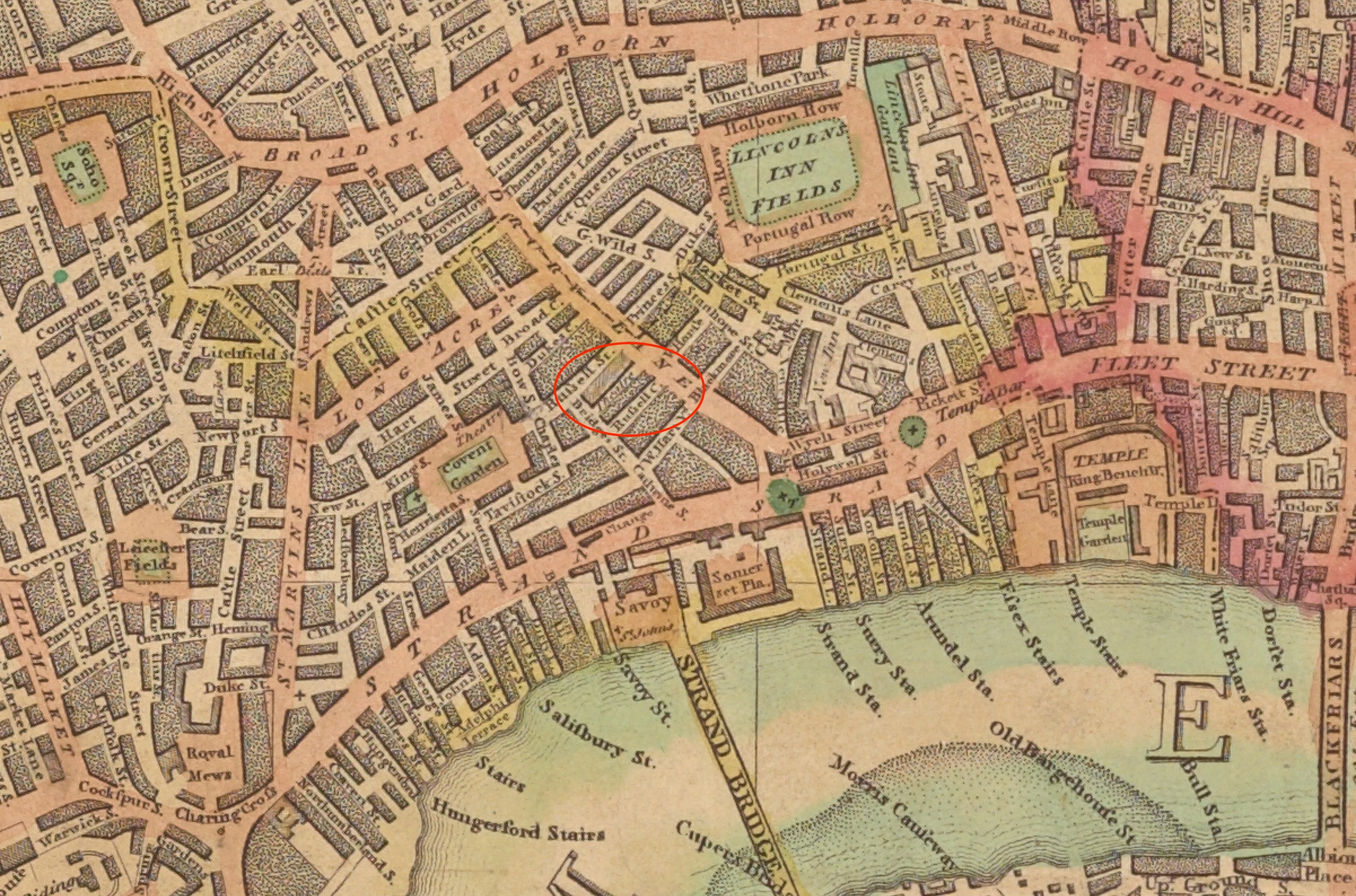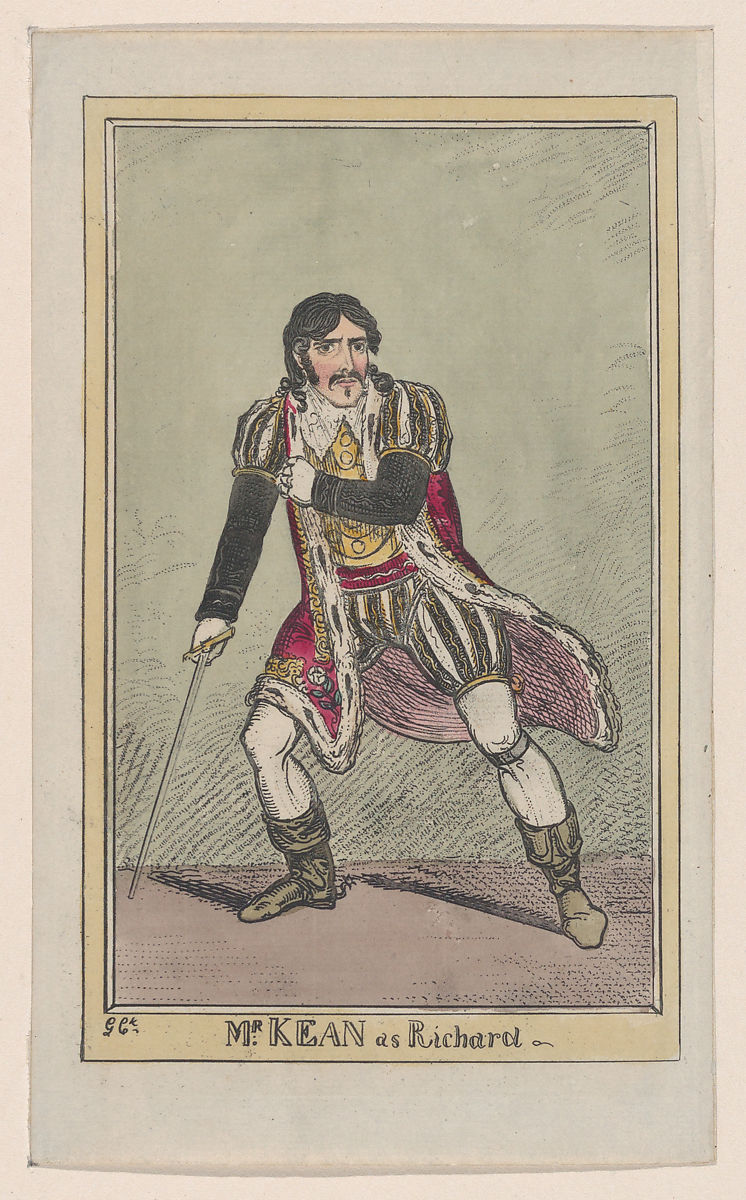15 December 1817: Kean’s Remarkable Richard III: the Development of a Crucial Idea


Keats sees Edmund Kean, perhaps the premier (and
certainly the most controversial) actor of the era, perform Shakespeare’s Richard III on
opening night at Drury Lane Theatre. The general consensus is that Kean is brilliant
in the
title role. Keats reports in a letter that Kean acts finely
(21 Dec 1817), and he
discusses Kean with other friends over the next few days. On 21 December, Keats’s
review of
Kean appears in the 21 December edition of The Champion
(Keats is subbing for his friend, John Hamilton
Reynolds, who is on vacation). Keats sees at least part of the play again on 12
January 1818.
Importantly, Keats attempts to understand and articulate what exactly Kean brings to Shakespeare—or more precisely, to Shakespeare’s words. In particular, Keats is
interested in what he perceives as the timeless quality of Kean’s presentation: the
way that
the language (poetry) is more important or pronounced (literally and figuratively)
than the
nominal role. The words, as it were, perform the action; and Kean, in his unique acting
style,
does not deflect the words by superfluous gesture. The shifting and shifty eloquence
of
Richard, who shares his evil intent with us, his audience, is a perfect character
for Keats to
seize upon as possessing camelion
poetic powers. That is, Keats sees (and hears) via
Kean’s representation of the text that language, syllable by syllable, with intense
expression, has its own force and character beyond the particular figure who expresses
the
words. To put it still another way, Keats is struck that Kean’s acting style embodies
language—in ways that come naturally and, to use Keats’s terminology in The Champion review, sensually and with gusto. For Keats, little
does it matter what Richard represents in terms of values or ethics or character;
what matters
(for Keats) is the controlled, penetrating nature of his eloquence; there is splendor
in his
words, made even more so given—and profitably complicated by—his grotesque figure
and vile
intent. What matters is the poetry.
To massage this idea further, an aspect of this idea immediately becomes central to
Keats’s
poetics, and it becomes aspirational in terms of what Keats hopes to eventually achieve
in his
poetry. In fact, in about a year, this leads to some definite, and perhaps stunning,
leaps in
the quality of his poetry. One of Keats’s significant conclusions that both defines
and
propels his progress: that with a great poet the sense of Beauty overcomes every other
consideration, or rather obliterates all consideration
(letters, 21/27 Dec). Richard’s
(Shakespeare’s) mutating and highly articulate expression of complex, conniving, brutal
evil
is (again, despite Richard’s own gross deformities) beautiful—and therefore, paradoxically,
truthful: his frightening eloquence obliterates
all else. Keats here gleans and
formulates something crucial from watching Kean that he will carry over into his poetics
and
then into his poetry.
Critical elements—in particular, how in superior art all disagreeables evaporate, from
their being in close relationship with Truth & Beauty
(21/27 Dec)—now come together
in the formation of Keats’s epistolary poetics. This has been brewing: Keats’s ideas
are also
extracted from many others, including Benjamin Robert
Haydon and Samuel Taylor Coleridge,
but particularly from William Hazlitt, who, we
note, a few years earlier also praises Kean’s
embodiment of Shakespeare’s dramatic energy
and passion (in his review of Kean in Richard III, in The Examiner, 19 March 1815). Hazlitt, we know, has become a
major influence on Keats’s critical thoughts and tastes, and Keats will profitably
massage
some of Hazlitt’s ideas and opinions.
So, December 1817 is significant moment in Keats’s thinking, with diverse elements
compiling
and intertwining. Besides being forced to articulate Kean’s remarkable qualities and assimilating Hazlitt’s critical insights, Keats recognizes the deficiencies of his recently
completed Endymion, the flaws in certain kinds of art (he succinctly articulates the
deficiency Benjamin West’s painting Death on a Pale Horse in arriving at his key concept of
Negative Capability
—letters, 21/27 Dec), and he meets the most important
poet of the era, William Wordsworth, which
will motivate him to explore and assess the nature of Wordsworth’s genius—and, before
the end
of the following year, he well draw some conclusions about the nature of his own poetical
character, so crucially relative to Wordsworth’s egotistical sublime
(letters, 27 Oct
1818). (See too 20 December 1817).
In short, at the end of 1817, various circumstances and factors accumulate and fuse so that Keats can articulate what kind of poet he wants to become—and what kind of poetry he wants to write. And as mentioned, it will take just over a year for this poetical character to begin to appear in his poetry. [For a compilation of these circumstances and factors, see the conclusions page.]


